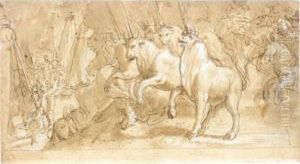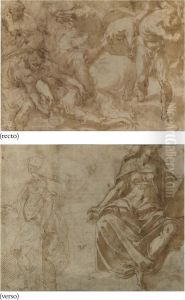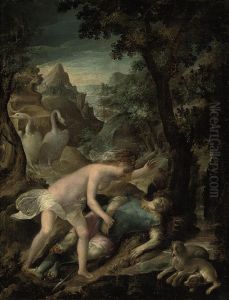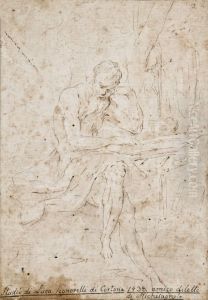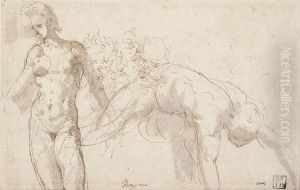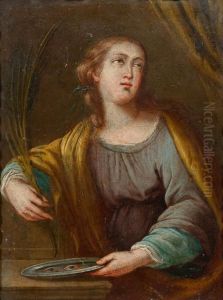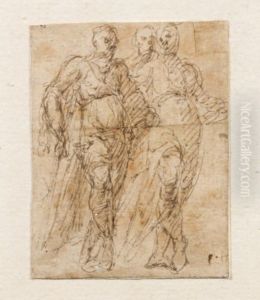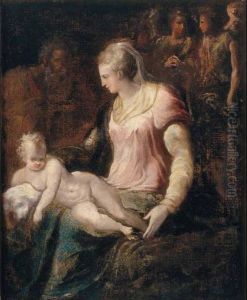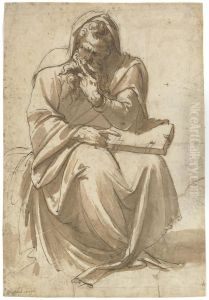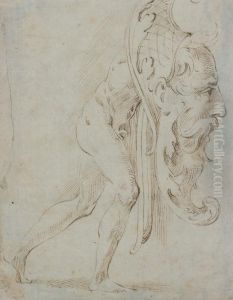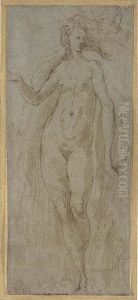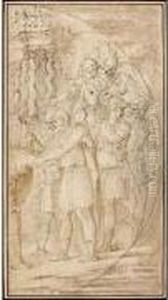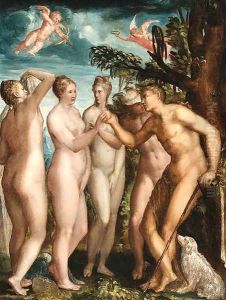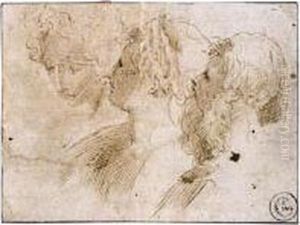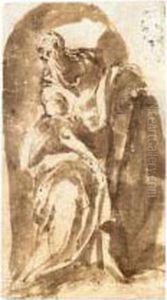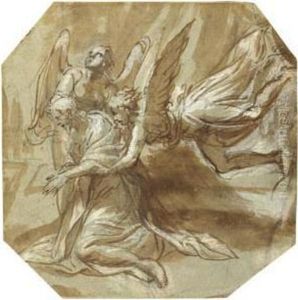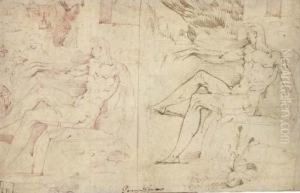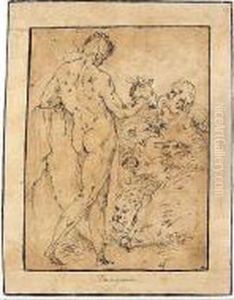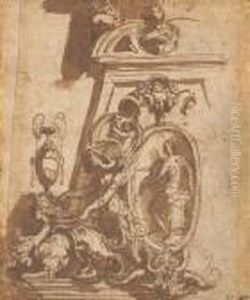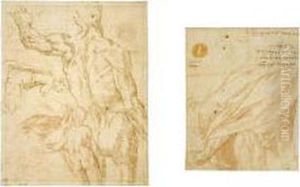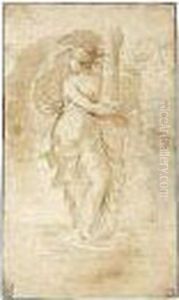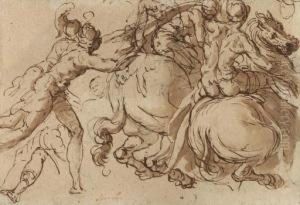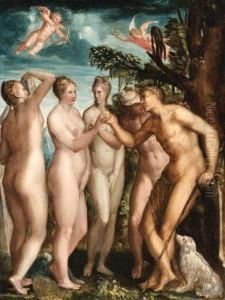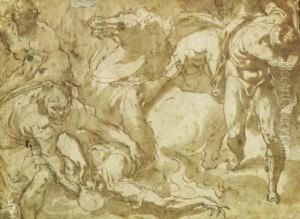Jacopo Zanguidi, Called Jacopo Bertoija Paintings
Jacopo Zanguidi, also known as Jacopo Bertoia or Jacopo Bertoja, was an Italian painter of the Renaissance period, born in Parma in 1544. His artistic journey began under the guidance of the prominent Parmigianino, whose Mannerist style had a considerable influence on the young Jacopo. After the death of Parmigianino, Jacopo continued his apprenticeship with another Mannerist painter, Girolamo Mazzola Bedoli, who was his cousin and also a significant figure in the Parma school of painting.
Bertoia's work is characterized by its elegant figures and a preference for mythological and allegorical subjects, which he executed with a refined and graceful Mannerist aesthetic. His compositions often feature elongated figures and a sophisticated use of color and light, typical of the Mannerist style that aimed to go beyond the naturalistic representation of the High Renaissance.
During his career, Bertoia worked on various projects including frescoes, altarpieces, and private devotional paintings. His frescoes in the Rocca Sanvitale of Fontanellato, depicting scenes from Ovid's Metamorphoses, are some of his most famous works. These paintings showcase his talent for storytelling and his ability to imbue his figures with a sense of movement and emotional expression.
Despite his promising career, Jacopo Bertoia's life was cut short when he died at the young age of 30 in 1574. His early death meant that his body of work was not as extensive as some of his contemporaries, but his contributions to the Mannerist movement in Northern Italy remain significant. Bertoia's work is seen as a bridge between the High Renaissance and the later Baroque period, and his legacy is reflected in the works of subsequent artists who were influenced by his distinctive style.
